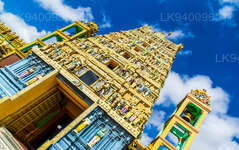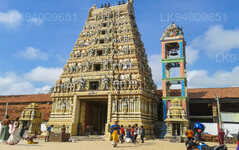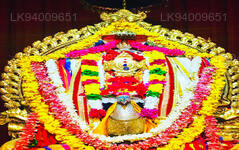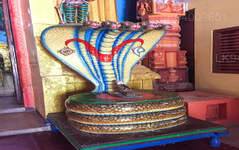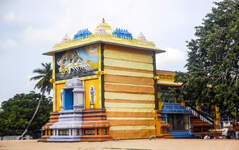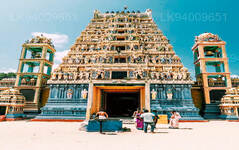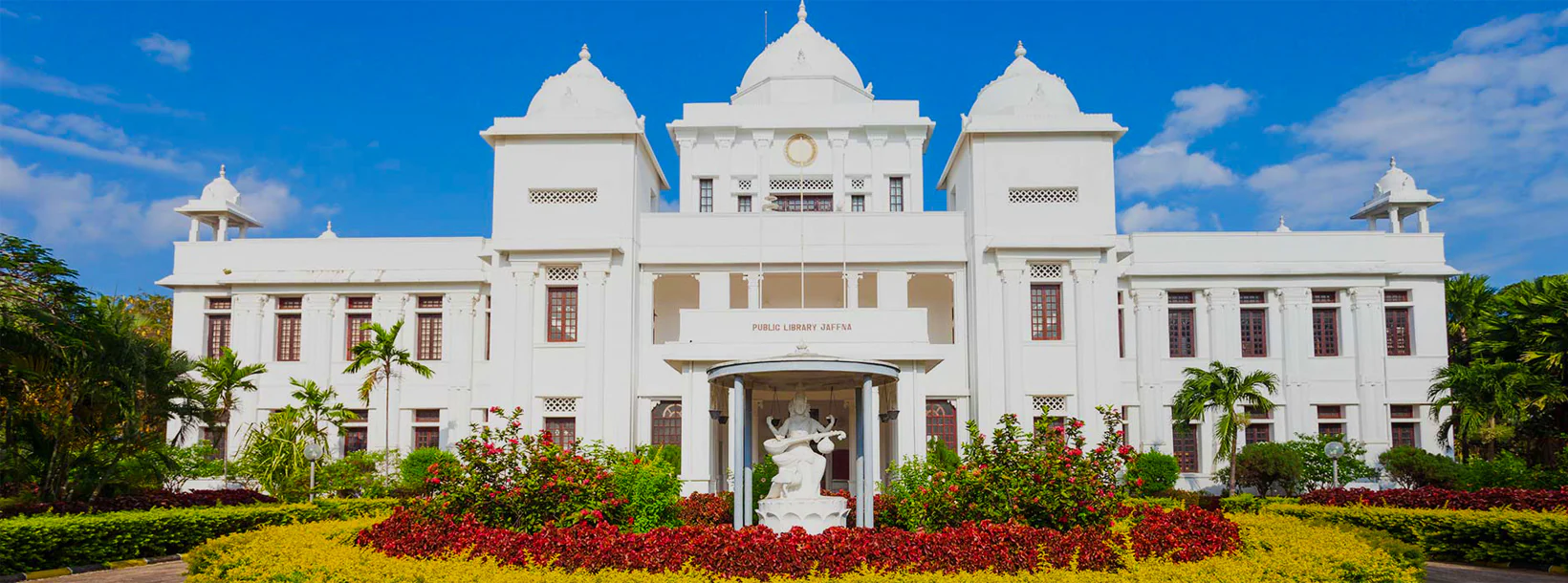
Jaffna City
Jaffna is the main city of Jaffna peninsula in the northernmost district of Sri Lanka. Comfortable intercity busses from Colombo take 10-12 hours to reach the city of Jaffna.
ヴァリプラム
ヴィシュヌ寺院ヴァリプラムは、ジャフナで最も古い寺院の 1 つです。この寺院には毎日、特に日曜日には参拝者が集まります。広大な砂丘の中に位置し、この地域がかつてジャフナ地域の首都だったとは想像するのが難しいです。ポール様。カドゥルゴダの発見者でもある E ピアリスはここで重要な発見を行い、その後、それらはランバカルナの初代王ヴァサバ (65 – 109 AC) の時代のものであると特定されました。金板の碑文には、「偉大な王ヴァサバの治世に万歳があり、大臣イシギラヤンがナカディヴァを統治していたとき、ピヤグティカティッサはバダカラ・アタナにヴィハーラ(寺院)を建てさせた」という言葉が記録されています。この寺院の起源は、他の寺院と同様、伝説に基づいています。物語によれば、敬虔な女性であるラヴァリ・アンマイヤルはナガドシャム(呪い)に悩まされていたため、子供を産むことができなかったという。彼女はヴィシュヌ神にとって神聖な場所に行き、罪の赦しを懇願するよう勧められた。彼女は、ヴィシュヌ神が彼女の前に現れ、海から立ち上がり、願いを叶えてくれる事を願い、海に向かって腕を広げて毎日タパス(祈り)を行っていました。ある日、村の漁師たちが漁をしていたとき、網を投げて大きな魚を捕まえ、それがラヴァリ・アンマイヤルさんの腕に飛び込みました。彼女がそれを握ると、それはヴィシュヌ神自身に似た幼児の形に変わりました。幼児が姿を消したとき、その場にいた老占い師が人々にヴィシュヌ・チャカラム(円盤、ヴィシュヌの象徴)を手渡し、人々はそれをこの場所に設置し、この出来事を記念して崇拝することに決めました。聖域では、ヴィシュヌ神のチャッカラム (円盤) が、祭りの際に行列に連れ出されるウツァヴァ ムールシー (神) の場所を占めています。毎年8月から9月にかけて祭りが開催されます。
地名は「ヴァリ」、タミル語とシンハラ語で「砂」を意味します。ここのヴィシュヌ寺院は 13 世紀頃に建てられました。タミル仏教徒とヒンズー教のカルトは、たとえ統治者がそうでなかったとしても問題なく共存していたため、ヴァイシュナヴァ派の伝統も初期には存在した可能性がある。寺院の神はヴァリプラ・アズヴァルと呼ばれます。アズヴァルの名前はヴァイシュナビ派の伝統では一般的です。この場所はスリランカで最初に定住した場所です。スリランカの残りの地域にはこの上陸地から人口が集まりました。ヴァリプラム (サンディシティ) には、金の碑文に紀元前 2 世紀からの歴史が記録されており、地元の支配者は「アザギリ」と名づけられており、その名前はネルガラの石碑文 (紀元前 2 世紀) で確認されています。ヴァサバ王についても言及されていると考えられている。仏教の聖地リスト (「ナンポタ」) では、この場所を「ヴァリプラム」または砂の都市と呼んでいます。この寺院群の正確な詳細は不明ですが、アーンドラ プラデーシュ州アマラヴァティのドラヴィダ A 彫刻の伝統に従って建てられた有名な「ヴァリプラム」仏像が、ヒンズー教寺院の地下の発掘調査で発見されました。碑文の言語はタミル・プラクリット語であり、当時アーンドラ語で使用されていた文字碑文といくつかの類似点があります。ジャフナ・タミル人とアーンドラ・プラデーシュ州の間の文化交流は、サンガム時代のタミル貿易の最盛期に起こり、テルグ語のサータヴァーハナ王朝がその権力の頂点にあった紀元前230年から第17代君主ハラ(西暦20~24年)の時代まで続いた。 )島の王女と結婚した。ピーター・シャルク教授(ウプサラ大学)は次のように書いています。おそらく西暦最初の世紀には商店街だったでしょう。このヴァリプラム像を比較するためのすでに年代の定められた石から、この像は紀元後 3 ~ 4 世紀のものであると結論付けることができます。その期間中に、典型的なアマラヴァティ仏陀の彫刻が開発されました。」ここで見つかった仏像は、1906 年に当時のイギリス総督ヘンリー ブレークによってタイ国王に贈られたものです。アーリヤ チャクラワルティの子孫はカリンガ マガ家と結婚し、シンガイ アーリア人の王朝を築き、ヴァリプラムから統治し、シンガイ ナガルと改名しました。しかし、歴史的に有用な物品、例えば碑文、美術品、文学作品などはこれらの統治者によって残されておらず、パラナビタナや他の歴史家は、彼らが共同体の主要な統治者であるS.パラナビタナに敬意を表したと主張している。ヴァサバの治世。 Epigraphia Zeylanica、4 (1936) 229-236。最近、カルティゲス・インドラパラ著『民族アイデンティティの進化』(2005 年) によって完全な議論が行われており、1965 年の初期の著作でもインドラパラ博士はパラナビターナの意見に同意して、ジャフナにおけるキリスト教以前の仏教文明の繁栄を主張した。ムドリヤル・C・ラサナヤガムの古代ジャフナ。
About Jaffna District
Jaffna is the capital city of the Northern Province, Sri Lanka. 85% of the populations of the Jaffna and Kilinochchi districts are Hindus. The Hindus follow the Saivite tradition. The remainders are largely Roman Catholics or Protestants, some of whom are descendants of colonial settlers, known as Burghers. The Tamils are divided along caste lines, with the farmer-caste Vellalar forming the majority. Sea products, red onion, and tobacco are the main products in Jaffna.
Jaffna is home to beautiful Hindu temples. An Old Dutch Fort still stands well preserved within which is an old Church. Another example of Dutch architecture is the King's House. No visit to Jaffna is complete without tasting the exquisite Jaffna mango, reputed for its sweetness. About 3 km away is the majestic Nallur Kandaswamy Temple, home to the largest religious festival in Jaffna. The Kayts Harbour is an ancient ship docking site in the Jaffna region.
About Northern Province
The Northern Province is one of the 9 provinces of Sri Lanka. The provinces have existed since the 19th century but they didn't have any legal status until 1987 when the 13th Amendment to the 1978 Constitution of Sri Lanka established provincial councils. Between 1988 and 2006 the province was temporarily merged with the Eastern Province to form the North-East Province. The capital of the province is Jaffna.
Northern Province is located in the north of Sri Lanka and is just 22 miles (35 km) from India. The province is surrounded by the Gulf of Mannar and Palk Bay to the west, Palk Strait to the north, the Bay of Bengal to the east and the Eastern, North Central and North Western provinces to the south.The province has a number of lagoons, the largest being Jaffna Lagoon, Nanthi Kadal, Chundikkulam Lagoon, Vadamarachchi Lagoon, Uppu Aru Lagoon, Kokkilai lagoon, Nai Aru Lagoon and Chalai Lagoon.Most of the islands around Sri Lanka are to be found to the west of the Northern Province. The largest islands are: Kayts, Neduntivu, Karaitivu, Pungudutivu and Mandativu.
The Northern Province's population was 1,311,776 in 2007. The majority of the populations are Sri Lankan Tamils, with a minority Sri Lankan Moor and Sinhalese population. Sri Lankan Tamil is the major language spoken in the province by the vast majority of the population. The other language spoken is Sinhala by 1 percent of the population. English is widely spoken and understood in the cities.

